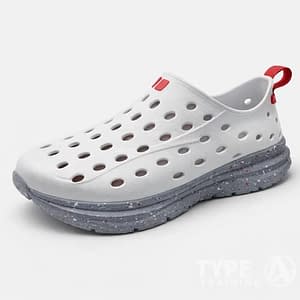Bone conduction headphones have totally changed things for runners and fitness fans who want to listen to music without losing awareness of what’s happening around them.
These clever devices let you keep your workout playlist going while still hearing traffic, other runners, or anything else you need to notice.
Unlike regular headphones that block out outside noise, bone conduction tech keeps your ear canals open. That way, you can actually hear what’s going on nearby during your exercise.

Popular posts:
These headphones send vibrations right through your skull to your inner ear, skipping the eardrum entirely.
This approach has made bone conduction headphones a big hit with the fitness crowd, especially if you care about both motivation and safety during outdoor workouts.
Key Takeaways
- Bone conduction headphones send sound through your skull bones instead of your ear canal, so you can hear what’s around you while listening to audio.
- You get to keep your situational awareness during runs and workouts and still have music for motivation.
- They offer a safer choice for outdoor fitness when you really need to hear traffic and your environment.
How Bone Conduction Headphones Deliver Sound Through Your Skeleton

Bone conduction headphones don’t work like traditional ones. Instead of sending sound through your ear canal, they transmit it straight through your skull bones to your inner ear.
When you put on bone conduction headphones, they rest on your cheekbones—not inside or over your ears.
Inside, you’ll find transducers that turn audio signals into tiny vibrations. These vibrations travel through your cheekbones right to your cochlea (the spiral-shaped part of your inner ear).
This setup lets you hear your music and the world around you at the same time. Your ear canals stay open, so outside sounds reach your eardrums as usual.
How Your Body Processes Sound
Your body can pick up sound in two main ways:
- Air conduction – Sound waves move through the air, into your outer ear, down your ear canal, and vibrate your eardrum.
- Bone conduction – Vibrations pass straight through your skull bones to your inner ear.
Ever notice how your voice sounds different on a recording? That’s because your skull is sending some of those sound vibrations directly to your inner ear while you speak.
Key Components of Bone Conduction Headphones
| Component | Function |
|---|---|
| Transducers | Convert electrical signals to mechanical vibrations |
| Cheekbone pads | Create contact points for vibration transfer |
| Open design | Keeps ear canals unblocked for environmental awareness |
Manufacturers place these headphones on your cheekbones for a few reasons:
- They stay put during workouts.
- They keep steady contact with the bone for reliable sound.
- They’re usually more comfortable than sticking something behind your ear.
This tech isn’t just for casual listening. Bone conduction technology shows up in military communications and some hearing aids, especially for people with issues in their outer or middle ear.
For folks with conditions like aural atresia (where the ear canal’s missing), bone conduction gives sound a way to reach the inner ear, skipping over the blocked parts.
If you try bone conduction headphones for the first time, the sensation might feel odd. You’ll hear your music and what’s happening around you—kind of a weird but cool experience that keeps you aware while you listen.
How Bone Conduction Headphones Differ From Regular Headphones
Bone conduction headphones work in a way that’s pretty different from what you’re probably used to. Regular headphones send sound through the air into your ear canal, vibrating your eardrum. That’s air conduction.
Typical headphones come in a few styles:
- Over-ear (covering your whole ear)
- On-ear (sitting right on your ear)
- In-ear (going inside your ear canal)
All of these have speakers that push sound waves through the air into your ears.
Bone conduction headphones skip your ear canal. They use transducers that:
- Rest against your cheekbones
- Turn sound into vibrations
- Send those vibrations through your skull to your inner ear
Your ear canals stay open while you listen. Most bone conduction headphones have a wrap-around band that keeps the transducers pressed against your cheekbones.
When you wear bone conduction headphones:
- You can hear outside sounds easily
- You don’t get the same isolation as with traditional headphones
- Your ears stay free and comfortable
They’re great for situations where you need to stay aware of your surroundings. But honestly, they might not give you the same immersive sound as a high-end pair of regular headphones.
What should you keep in mind when wearing bone conduction headphones?
When you use bone conduction headphones, it helps to keep a few things in mind. These devices have their perks, but you’ll get the most out of them if you use them the right way.
Volume Management
- Start at a lower volume and bump it up slowly if you need to
- Don’t crank it so high that the vibrations get uncomfortable
- Too much volume for too long can still hurt your hearing, just like with regular headphones
Awareness Considerations
- Your ear canals are open, but you won’t have perfect environmental awareness
- Sometimes your audio will mask outside sounds
- You’ll hear more of your surroundings than with in-ear headphones, but not quite as much as with bare ears
Ideal Activities for Use
- Running outdoors with better awareness
- Cycling when hearing traffic is a must
- Working out when you need to keep tabs on your environment
Finding Comfort
- Put the transducers on your cheekbones, just in front of your ears
- Make sure they’re snug but not too tight
- Adjust the headband so the pressure’s spread out evenly
Bone conduction headphones can be a game-changer for people with certain hearing issues, especially conductive hearing loss. They completely skip the ear canal and send sound through bone vibrations.
For outdoor lovers and athletes, these headphones strike a nice balance between enjoying music and keeping an ear out for what’s happening around you. That’s why runners and cyclists who need to stay alert often pick them.
Try them out in a quiet place first. That way, you can get used to how they sound and figure out the best volume and fit before heading into noisy spots.
What to Consider Before Buying Bone Conduction Headphones
If you’re shopping for bone conduction headphones, pay close attention to the design. Get a pair with a sturdy headband that presses against your skull for solid sound transmission. Skip ones that just dangle from your ears—they usually don’t give you real bone conduction.
Key factors to consider:
- Design: Go for headphones with a firm headband that keeps contact with your skull
- Safety: These can boost your awareness when running or biking
- Audio levels: Keep the volume moderate to stay aware of your surroundings
- Battery life: Check the specs so you don’t get cut off mid-workout
- Bluetooth connection: Make sure they pair reliably with your devices
For outdoor activities, bone conduction headphones can be super useful audio devices that bring both entertainment and safety. Just remember: your ability to stay aware depends on keeping the music at a reasonable level.
When to Avoid Using Bone Conduction Headphones
Bone conduction headphones aren’t right for every situation. If you care about premium sound quality, you’ll probably want to look elsewhere.
Honestly, these devices just can’t compete with the audio experience you’d get from really good traditional headphones.
Situations where you might want to skip bone conduction headphones:
- Noisy environments – On buses or trains, they won’t block outside noise well.
- When you want audio isolation – They don’t seal you off from the world.
- During activities needing full hearing awareness – In busy traffic or dangerous areas, it’s safer to skip headphones altogether.
Bone conduction headphones can also bring up health considerations for some folks. If you use them at high volumes for a long time, you could still risk hearing damage—same as with regular headphones.
The spots where the headphones touch your skin might get irritated, or even a little infected, if you don’t keep them clean.
Common Questions About Bone Conduction Headphones
Can Bone Conduction Headphones Cause Discomfort?
Most people get used to bone conduction headphones quickly. Still, some notice mild discomfort at first.
Possible side effects include:
- Mild pressure on your cheekbones
- Skin irritation if you wear them for a long time
- Tickling sensation from the vibrations
- Fatigue after extended use
Usually, these things fade as you adjust. Taking short breaks can help if you’re listening for hours.
How Do They Work for People with Hearing Loss?
Bone conduction headphones can be especially helpful for some hearing impairments, especially those involving the outer or middle ear.
Some key benefits:
- They bypass damaged parts of your outer and middle ear.
- You can often use them with hearing aids.
- They’re an option if regular in-ear headphones don’t work for you.
But if you have inner ear or nerve-related hearing issues, these probably won’t help much since they still rely on your cochlear nerves working.
Can You Use Earplugs with Bone Conduction Headphones?
Yep, you can wear earplugs with bone conduction headphones. A lot of people actually like this combo.
When you use earplugs with bone conduction headphones:
- You block noise coming through your ear canal.
- The sound from the headphones still gets to your inner ear.
- You might notice better clarity in loud places.
- Bass can feel punchier since outside noise is reduced.
Swimmers especially love this setup with waterproof models.
How Do They Compare to Traditional Headphones?
Bone conduction headphones have their perks and drawbacks compared to regular headphones:
| Advantages | Limitations |
|---|---|
| Keep ears open for environmental awareness | Generally lower sound quality |
| Comfortable for long periods | Weaker bass response |
| Can be used with certain hearing aids | Some sound leakage to others nearby |
| Often more suitable for athletic activities | Battery life typically shorter |
| Reduced risk of ear infections | More expensive for comparable audio quality |
It really just comes down to what matters most to you.
Do Bone Conduction Headphones Leak Sound?
Yeah, bone conduction headphones do leak some sound, especially if you crank up the volume.
Here’s why:
- The vibrating parts send sound into your bones and into the air.
- At normal levels, people nearby might hear a faint, tinny noise.
- At higher volumes, it gets more noticeable.
They’re not great for private listening in quiet places like libraries or offices. Still, the leakage usually isn’t as bad as with open-back headphones.
How Do They Maintain Sound Quality?
Bone conduction headphones keep sound quality up with some pretty clever tech, even though they sit outside your ear canal.
They work by:
- Using magnetostriction drivers that convert audio signals into precise vibrations
- Positioning transducers to efficiently send those vibrations through your cheekbones
- Calibrating frequencies to make up for the way bone transmits sound differently
- Employing digital signal processing, which helps boost clarity
Honestly, they won’t beat top-tier traditional headphones, but today’s bone conduction models sound pretty clear. The bass is decent for most daily listening—good enough that you might be surprised.











